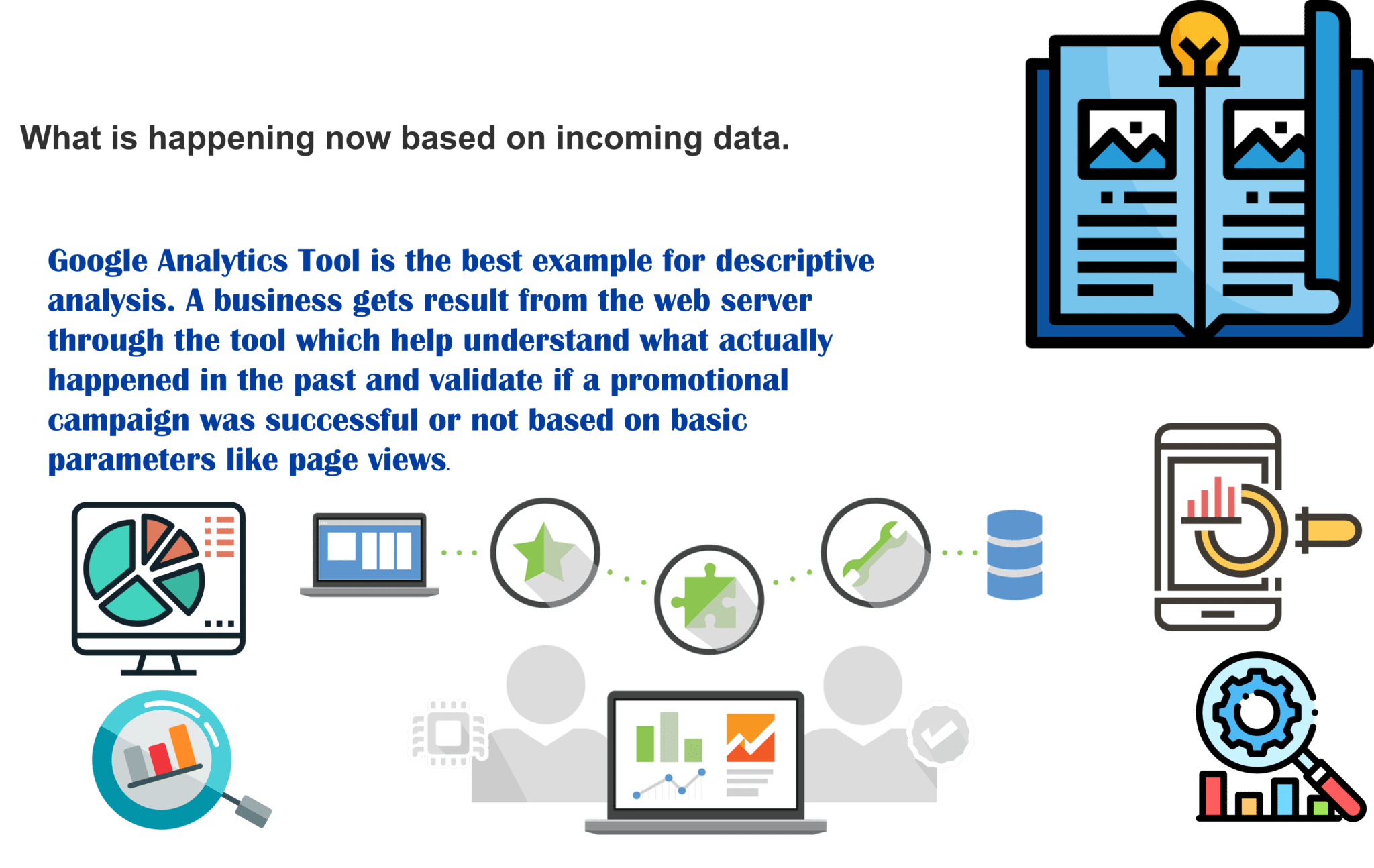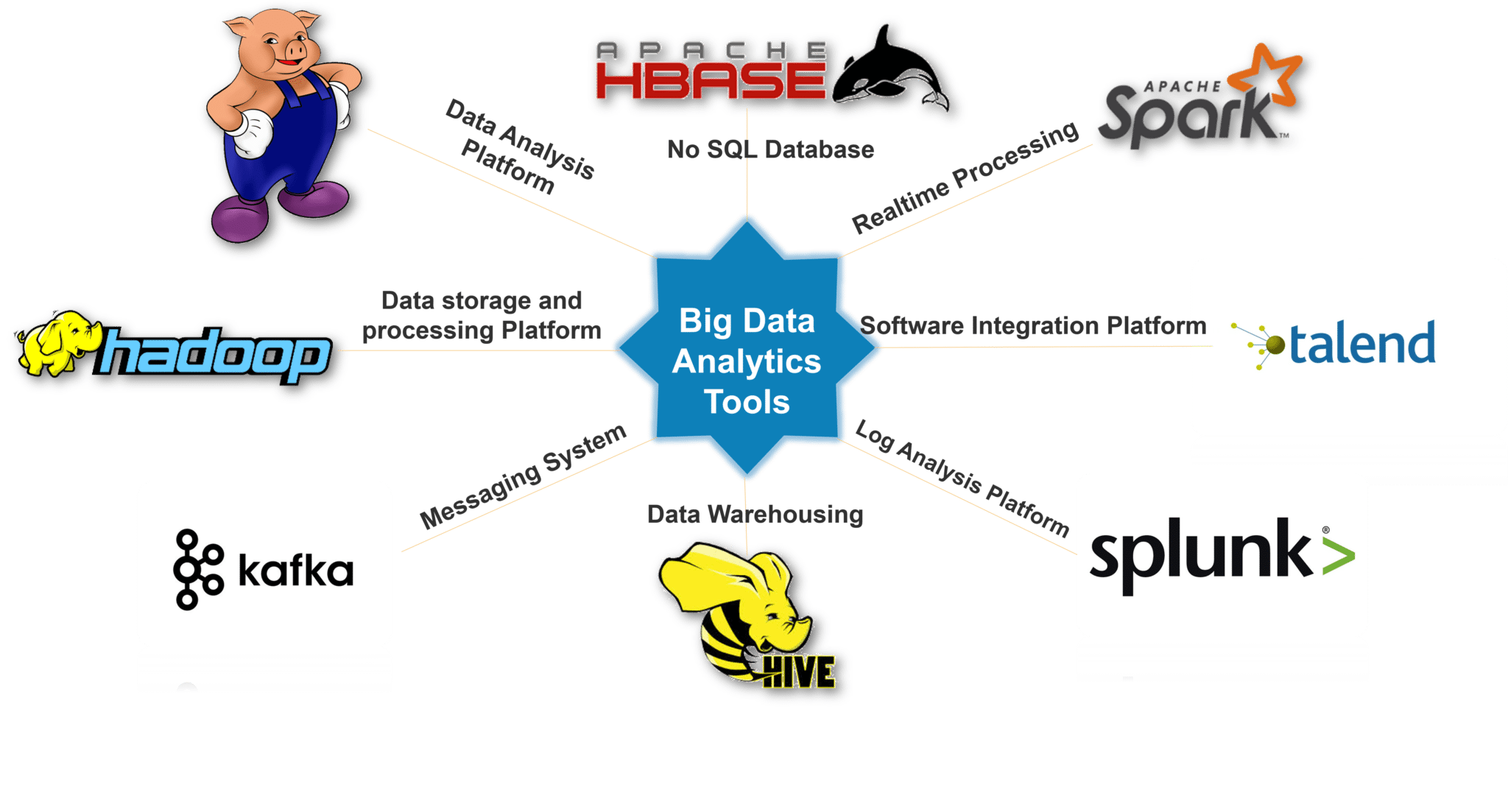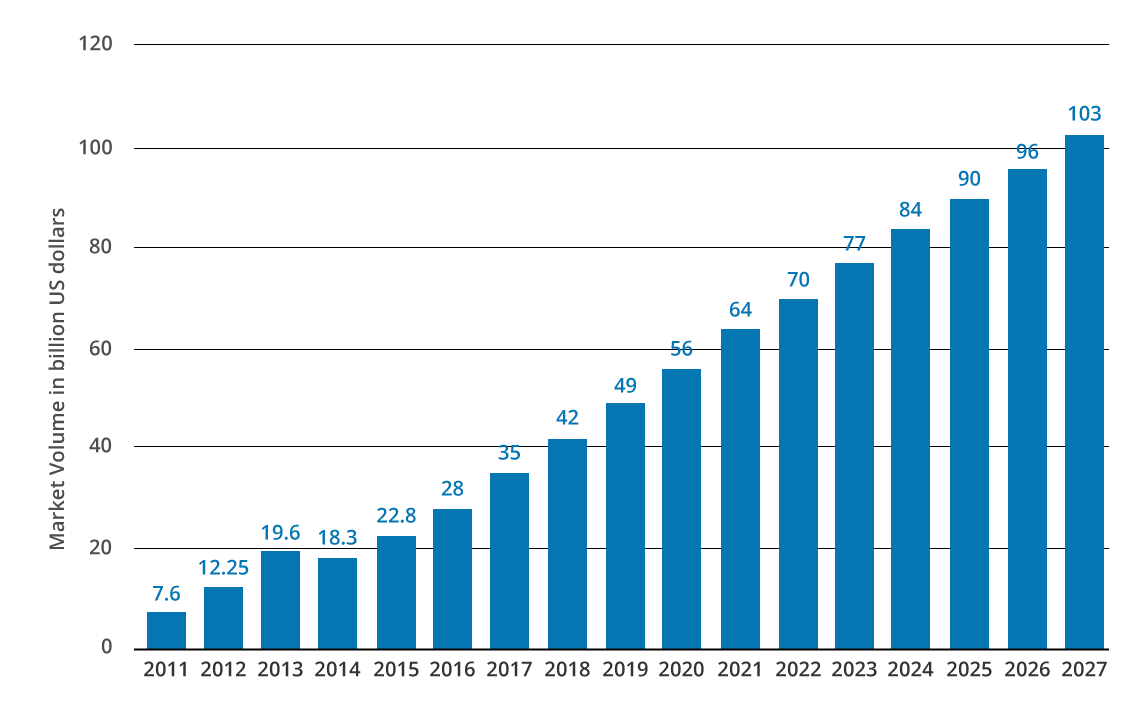Just like the entire universe and our galaxy is said to have formed due to the Big Bang explosion, similarly, due to so many technological advancements, data has also been growing exponentially leading to the Big Data explosion. This data comes in from various sources, has different formats, is generated at a variable rate and may also contain inconsistencies. Thus, we can simply term the explosion of such data as Big Data. I will be explaining the following topics in this blog to give you insights on Big Data Analytics :
- Why Big Data Analytics?
- What is Big Data Analytics?
- Big Data Tools
- Big Data Domains
- Big Data Use Cases
- Trends in Big Data Analytics
- To learn Big data visit:Big data hadoop training
Why Big Data Analytics?
Before I jump on to tell you about what is Big Data Analytics, let me tell you guys about why it is needed. Let me also reveal to you guys that we create about 2.5 quintillion bytes of data every day! So now that we have accumulated Big Data, neither can we ignore it nor can we let it stay idle and make it go to waste.
Various organizations and sectors all across the globe started adopting Big Data Analytics in order to gain numerous benefits. Big Data Analytics gives insights which many companies are turning into actions and making huge profits as well as discoveries. I am going to list down four such reasons along with interesting examples.
The first reason is,
Making Smarter and More Efficient Organisation

- Let me tell you about one such organisation, the New York Police Department (NYPD). The NYPD brilliantly uses Big Data and analytics to detect and identify crimes before they occur. They analyse historical arrest patterns and then maps them with events such as federal holidays, paydays, traffic flows, rainfall etc. This aids them in analyzing the information immediately by utilizing these data patterns. Big Data and analytics strategy helps them identify crime locations, through which they deploy their officers to these locations. Thus by reaching these locations before the crimes were committed, they prevent the occurrence of crime.
- Optimize Business Operations by Analysing Customer Behaviour
 Most organisations use behavioural analytics of customers in order to provide customer satisfaction and hence, increase their customer base. The best example of this is Amazon. Amazon is one of the best and most widely used e-commerce websites with a customer base of about 300 million. They use customer click-stream data and historical purchase data to provide them with customized results on customized web pages. Analysing the clicks of every visitor on their website aids them in understanding their site-navigation behaviour, paths the user took to buy the product, paths that led them to leave the site and more. All this information helps Amazon to improve their user experience, thereby improving their sales and marketing.
Most organisations use behavioural analytics of customers in order to provide customer satisfaction and hence, increase their customer base. The best example of this is Amazon. Amazon is one of the best and most widely used e-commerce websites with a customer base of about 300 million. They use customer click-stream data and historical purchase data to provide them with customized results on customized web pages. Analysing the clicks of every visitor on their website aids them in understanding their site-navigation behaviour, paths the user took to buy the product, paths that led them to leave the site and more. All this information helps Amazon to improve their user experience, thereby improving their sales and marketing. - Cost Reduction
 Big data technologies and technological advancements like cloud computing bring significant cost advantages when it comes to store and process Big Data. Let me tell you how healthcare utilizes Big Data Analytics to reduce their costs. Patients nowadays are using new sensor devices when at home or outside, which send constant streams of data that can be monitored and analysed in real-time to help patients avoid hospitalization by self-managing their conditions. For hospitalized patients, physicians can use predictive analytics to optimize outcomes and reduce readmissions. Parkland Hospital uses analytics and predictive modelling to identify high-risk patients and predict likely outcomes once patients are sent home. As a result, Parkland reduced 30-day readmissions for patients with heart failure, by 31%, saving $500,000 annually.
Big data technologies and technological advancements like cloud computing bring significant cost advantages when it comes to store and process Big Data. Let me tell you how healthcare utilizes Big Data Analytics to reduce their costs. Patients nowadays are using new sensor devices when at home or outside, which send constant streams of data that can be monitored and analysed in real-time to help patients avoid hospitalization by self-managing their conditions. For hospitalized patients, physicians can use predictive analytics to optimize outcomes and reduce readmissions. Parkland Hospital uses analytics and predictive modelling to identify high-risk patients and predict likely outcomes once patients are sent home. As a result, Parkland reduced 30-day readmissions for patients with heart failure, by 31%, saving $500,000 annually.
New Generation Products
With the ability to gauge customer needs and satisfaction through analytics, comes the power to give customers what they want. I have found three such interesting products to cite here.  First, Google’s self-driving car which makes millions of calculations on every trip that help the car decide when and where to turn, whether to slow down or speed up and when to change lanes — the same decisions a human driver makes behind the wheel.
First, Google’s self-driving car which makes millions of calculations on every trip that help the car decide when and where to turn, whether to slow down or speed up and when to change lanes — the same decisions a human driver makes behind the wheel.
 First, Google’s self-driving car which makes millions of calculations on every trip that help the car decide when and where to turn, whether to slow down or speed up and when to change lanes — the same decisions a human driver makes behind the wheel.
First, Google’s self-driving car which makes millions of calculations on every trip that help the car decide when and where to turn, whether to slow down or speed up and when to change lanes — the same decisions a human driver makes behind the wheel.
The second one is Netflix which committed for two seasons of its extremely popular show House of Cards, by completely trusting Big Data Analytics! Last year, Netflix grew its US subscriber base by 10% and added nearly 20 million subscribers from around the globe.
The third example is one of the really cool new things I have come across, is a smart yoga mat. The first time you use your Smart Mat, it will take you through a series of movements to calibrate your body shape, size and personal limitations. This personal profile information is stored in your Smart Mat App and will help Smart Mat detect when you’re out of alignment or balance. Over time, it will automatically evolve with updated data as you improve your Yoga practice.
What is Big Data Analytics?
Now let us formally define “What is Big Data Analytics?” Big data analytics examines large and different types of data to uncover hidden patterns, correlations and other insights. Basically, Big Data Analytics is largely used by companies to facilitate their growth and development. This majorly involves applying various data mining algorithms on the given set of data, which will then aid them in better decision making.
Stages in Big Data Analytics
These are the following stages involved in the Big Data Analytics process:

Types of Big Data Analytics
There are four types:
- Descriptive Analytics: It uses data aggregation and data mining to provide insight into the past and answer: “What has happened?” The descriptive analytics does exactly what the name implies they “describe” or summarize raw data and make it interpretable by humans.

- Predictive Analytics: It uses statistical models and forecasts techniques to understand the future and answer: “What could happen?” Predictive analytics provides companies with actionable insights based on data. It provides estimates about the likelihood of a future outcome.

- Prescriptive Analytics: It uses optimization and simulation algorithms to advice on possible outcomes and answers: “What should we do?” It allows users to “prescribe” a number of different possible actions and guide them towards a solution. In a nutshell, this analytics is all about providing advice.

- Diagnostic Analytics: It is used to determine why something happened in the past. It is characterized by techniques such as drill-down, data discovery, data mining and correlations. Diagnostic analytics takes a deeper look at data to understand the root causes of the events.

Big Data Tools
These are some of the following tools used for Big Data Analytics: Hadoop, Pig, Apache HBase, Apache Spark, Talend, Splunk, Apache Hive, Kafka.

Big Data Domains

- Healthcare: Healthcare is using big data analytics to reduce costs, predict epidemics, avoid preventable diseases and improve the quality of life in general. One of the most widespread applications of Big Data in healthcare is Electronic Health Record(EHRs).
- Telecom: They are one of the most significant contributors to Big Data. Telecom industry improves the quality of service and routes traffic more effectively. By analysing call data records in real-time, these companies can identify fraudulent behaviour and act on them immediately. The marketing division can modify its campaigns to better target its customers and use insights gained to develop new products and services.
- Insurance: These companies use big data analytics for risk assessment, fraud detection, marketing, customer insights, customer experience and more.
- Government: The Indian government used big data analytics to get an estimate of trade in the country. They used Central sales tax invoices to analyse the extent to which states trade with each other.
- Finance: Banks and financial services firms use analytics to differentiate fraudulent interactions from legitimate business transactions. The analytics systems suggest immediate actions, such as blocking irregular transactions, which stops fraud before it occurs and improves profitability.
- Automobile: Rolls Royce which has embraced Big Data by fitting hundreds of sensors into its engines and propulsion systems, which record every tiny detail about their operation. The changes in data in real-time are reported to engineers who will decide the best course of action such as scheduling maintenance or dispatching engineering teams.
- Education: This is one field where Big Data Analytics is being absorbed slowly and gradually. Opting for big data powered technology as a learning tool instead of traditional lecture methods, enhanced the learning of students as well as aided the teachers to track their performance better.
- Retail: Retail including e-commerce and in-stores are widely using Big Data Analytics to optimize their business. For example, Amazon, Walmart etc.
Big Data Use Cases
The first use case that I have taken here is of Starbucks.
Trends in Big Data Analytics
The image below depicts the market revenue of Big Data in billion U.S. dollars from the year 2011 to 2027.

Here are some Facts and Statistics by Forbes:

Career prospects in Big Data Analytics:

- Salary Aspects: The average salary of the analytics jobs is around $94,167. Data Scientist has been named the best job in America for three years running, with a median base salary of $110,000 and 4,524 job openings. In India the percentage of analytics professionals commanding salaries less than INR 10 Lakhs has gone lower; percentage of analytics professionals earning more than INR 15 Lakhs has increased from 17% in 2016 to 21% in 2017 to 22.3% in 2018.
- Huge Job Opportunities: Companies like Google, Apple, IBM, Adobe, Qualcomm and many more hire Big Data Analytics Professionals.
Skillset
These are some of the skills which are required depending upon the role in the field of Big Data Analytics :

- Basic programming: One should have knowledge about at least some general purpose programming language such as Java and Python.
- Statistical and Quantitative Analysis: Having an idea about statistics and quantitative analysis is ideal.
- Data Warehousing: Knowledge of SQL and NoSQL databases is required.
- Data Visualization: It is very important to know how to visualize the data in order to be able to understand the insights and apply it in action.
- Specific Business Knowledge: One must necessarily be aware of the business where they are applying analytics in order to optimize their operations.
- Computational Frameworks: Preferably one should know about at least one or two tools which are required for Big Data Analytics.
Now that you know Big Data Analytics, check out the by big data online training








0 Comments:
Post a Comment